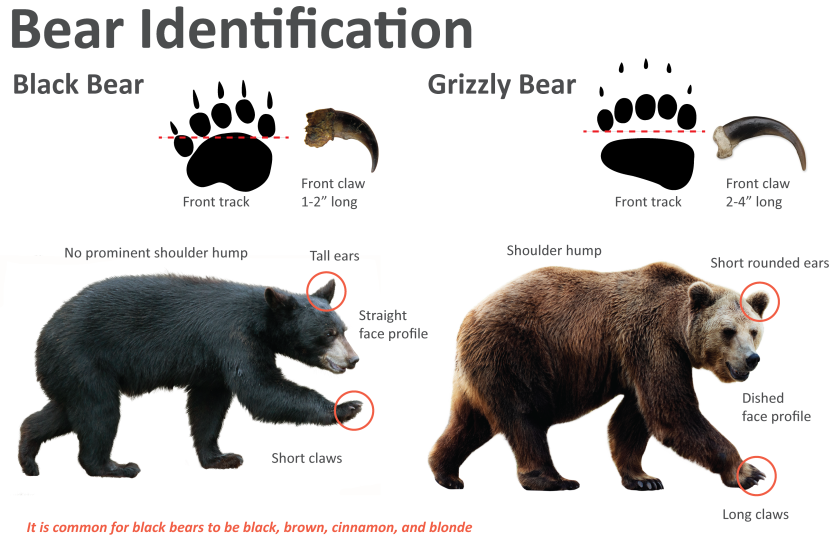
By Dave Workman
Editor-in-Chief
Washington State’s black bear season opens Aug. 1, and because there are some known grizzly bear populations in several counties in the northeast corner of the state, the Department of Fish and Wildlife has a video explaining the differences between the two bear species.
To hunt in any one of 12 game management units, hunters “must successfully complete the WDFW bear identification test or equivalent test from another state and carry proof of successful completion,” according to the agency website.
The specific GMUs include 101, 105, 108, 111, 113, 117, 203, 204, 209, 215, 418, and 426.
However, there is some disagreement between the video, featuring Lindsay Welfelt, assistant bear and cougar specialist with the WDFW, and the regulations pamphlet. In the video Welfelt says the grizzly population is in the Selkirk Mountains of the northeast region, but not in the North Cascades. The pamphlet notes “their presence has been documented in the Okanogan Highlands and the North Cascades.”
Grizzlies are normally identified by the visible shoulder hump, which does not appear on black bears. In her video, Welfelt acknowledges black bears are not always black, bug could be brown, cinnamon or even blonde.
Grizzlies also have visibly longer front claws, and their ears appear smaller and more rounded than the taller ears of the black bear, which might appear to be slightly more pointed.
Grizzly bears are not always bigger than black bears, either. There have been some very large black bears spotted and killed in the Evergreen State.
The fall hunting season for Washington black bears continues to Nov. 15. For the next month, bear hunters will be scouting areas where bears might normally be found, including berry areas, especially vast huckleberry fields in the higher elevations, plus wild blackberry areas in older clearcut areas.
According to the WDFW, “Black bears, meanwhile, are abundant in the west, northeast and the Blue Mountains in southeast Washington. Approximately 25,000 black bears are estimated to occur within Washington. They are a game species and are hunted annually. In any given year, approximately 29,000 hunters take about 1,300 black bears.”
It is not legal to hunt bears with hounds, or over bait, in Washington.



